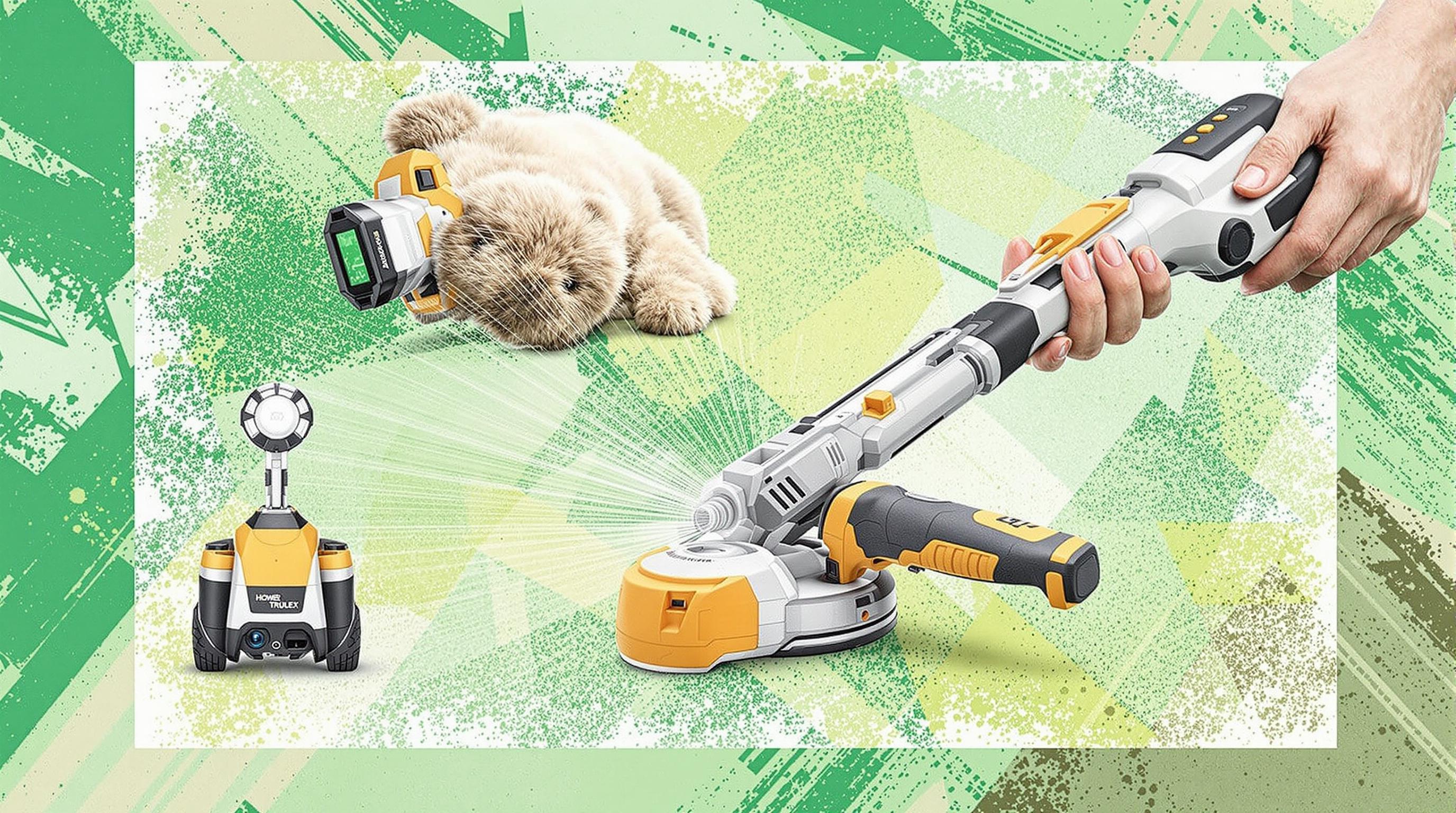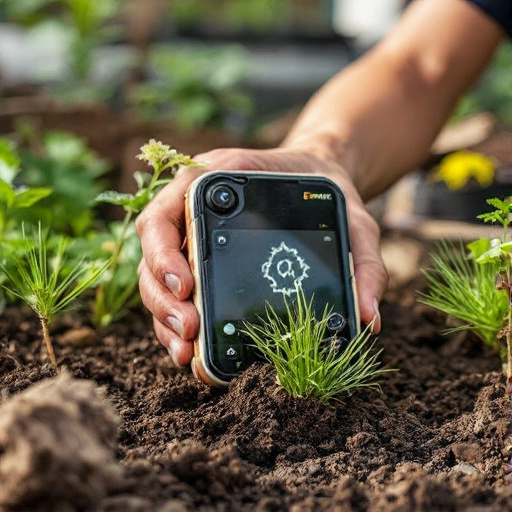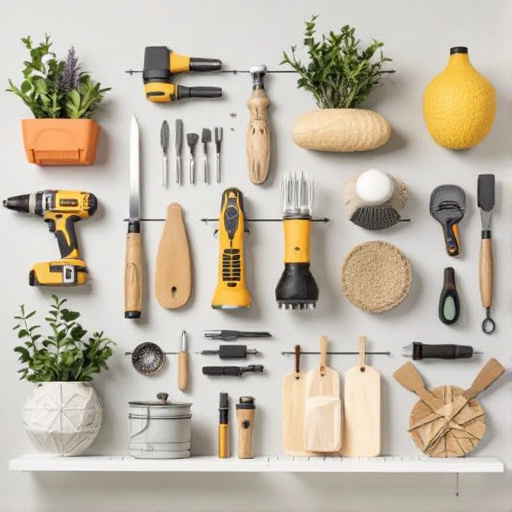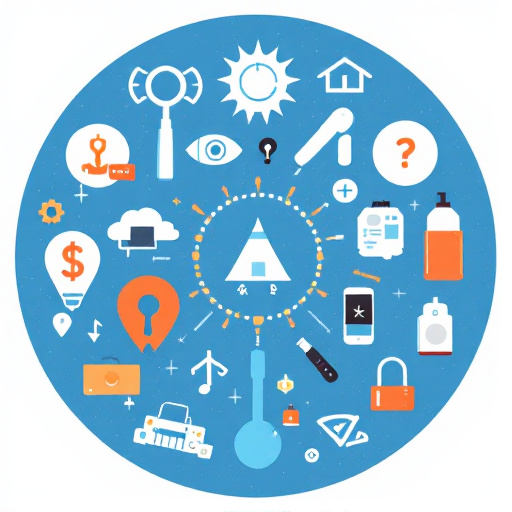Featured Articles
- The DIY Uprising: How Home Tool Customization is Shaping Personal Identity and Community Connections
- The Power of DIY: How Vintage Tools Are Making a Comeback in Modern Home Renovations
- The Rise of Eco-friendly Home Tools: Sustainable Solutions for Modern DIYers
- The Rise of Eco-Friendly Tools: Unconventional Gadgets for Sustainable Home Renovation
- The Rise of Smart Hand Tools: Are They Revolutionizing DIY or Just a Trendy Gimmick?
Top 8 Cutting-Edge Home Tools Launched in the Last 5 Years: In-Depth Comparison and Buyer’s Guide
Top 8 Cutting-Edge Home Tools Launched in the Last 5 Years: In-Depth Comparison and Buyer’s Guide
Top 8 Cutting-Edge Home Tools Launched in the Last 5 Years: In-Depth Comparison and Buyer’s Guide
1. Smart Thermostats
Smart thermostats have revolutionized home climate control by learning users' habits and optimizing temperature settings to save energy. Devices like the Google Nest Learning Thermostat and the Ecobee SmartThermostat provide seamless remote control through smartphone apps and voice assistants. These tools adapt to your schedule, reducing energy consumption while maintaining comfort.
Recently launched models enhance integration with smart home ecosystems, offering features such as occupancy sensors, humidity monitoring, and advanced learning algorithms. For example, Ecobee's latest models include built-in Alexa and remote sensor technology that adjusts temperature based on multiple rooms.
When choosing a smart thermostat, consider compatibility with your heating and cooling systems, smart home platforms, and ease of installation. According to the U.S. Department of Energy, smart thermostats can save homeowners about 10-15% on heating and cooling bills annually.
Sources: energy.gov
2. Robot Vacuum Cleaners
Robot vacuum cleaners have seen incredible advancements in navigation, suction power, and multi-surface cleaning capabilities over the last five years. Leading models like the iRobot Roomba s9+ and Roborock S7 have improved mapping technology using LIDAR and AI to efficiently clean floors without user intervention.
The integration of self-emptying dustbins and mopping functions elevates their utility, reducing manual maintenance and offering a more thorough clean. These devices can be scheduled and controlled remotely via apps, or operated using voice commands through Alexa or Google Assistant.
Buyers should evaluate battery life, cleaning modes, noise levels, and maintenance requirements. For pet owners, models with strong suction and allergen filters are recommended. Consumer Reports consistently lists the Roomba and Roborock series as top performers in durability and cleaning performance.
Sources: consumerreports.org
3. Smart Security Systems
The past half-decade has brought a surge in sophisticated smart security systems designed to protect homes with minimal hassle. Products like Ring Alarm Pro and Arlo Ultra offer wireless installation, HD video with night vision, motion detection, and customizable alert zones.
Advanced AI capabilities enable facial recognition and object detection, reducing false alarms and enhancing overall security. Integration with mobile apps allows users to monitor their property in real-time and control systems remotely.
When selecting a security system, factors such as monthly subscription costs for video storage, ease of installation, compatibility with other smart devices, and customer service quality should be considered. According to a Parks Associates report, smart home security adoption has grown by over 40% since 2019.
Sources: parksassociates.com
4. Smart Lighting Systems
Smart lighting solutions like Philips Hue and LIFX have matured with features including adjustable color temperature, scene setting, and energy-efficient LED bulbs controllable via voice and apps. Recent innovations also include circadian rhythm lighting that adapts brightness and color to support natural sleep cycles.
These lighting systems can be grouped or controlled individually, programmed for schedules or triggered by sensors such as motion or ambient light detectors. Compatibility with major voice assistants and smart home hubs ensures smooth integration.
When choosing smart lights, assess color range, brightness (lumens), power consumption, and ease of setup. Additionally, review app interface quality and third-party integrations for personalized control. Energy Star ratings are important for long-term savings.
Sources: philips-hue.com
5. Smart Locks
Smart locks like August Wi-Fi Smart Lock and Schlage Encode streamline door security by enabling keyless entry through smartphone apps or biometric verification. Recent models boast features like auto-lock/unlock, guest access controls, and tamper alerts.
The latest smart locks offer high levels of encryption and can integrate with home security systems and voice assistants for seamless control. Installation is often retrofit-friendly, working with existing deadbolts and allowing users to avoid changing keys immediately.
Security-conscious buyers should verify compatibility with their door hardware, consider battery life, and confirm encryption standards. Reviewing manufacturer firmware update policies is vital for ongoing security. According to Wired, smart locks are becoming more reliable and secure, but users must maintain vigilance.
Sources: wired.com
6. Home Assistants and Smart Displays
Home assistants such as Amazon Echo Show 15 and Google Nest Hub Max have evolved with larger, high-resolution displays to manage smart homes through voice, touch, and visual feedback. They serve as command centers for controlling other connected devices, accessing information, and entertainment.
Improvements in AI-driven natural language processing enhance responsiveness and contextual understanding. Features like video calling, calendar management, and home monitoring (via built-in cameras) add value beyond simple voice commands.
Selecting a smart display involves checking ecosystem compatibility (Alexa, Google Assistant), display size, audio quality, and privacy options such as camera shutters. The Verge highlights these devices as essential hubs for digital homes in 2024.
Sources: theverge.com
7. Smart Kitchen Appliances
The kitchen has become smarter with appliances like the June Oven and Samsung Family Hub smart refrigerator. These gadgets offer WIFI connectivity, inventory tracking, recipe suggestions, and remote temperature control.
Smart ovens now include sensor cooking that adjusts parameters based on food type and doneness, while smart refrigerators can monitor food freshness and create shopping lists automatically. Integration with voice assistants allows hands-free operation during cooking tasks.
Prospective buyers should look for durability, ease of cleaning, app functionality, and compatibility with other kitchen devices. Consumer Reports and manufacturer reviews provide critical insights into reliability and feature sets.
Sources: consumerreports.org
8. Smart Sprinkler Systems
Smart sprinkler controllers such as Rachio 3 and Orbit B-hyve optimize water usage by adjusting watering schedules based on local weather, soil conditions, and plant types. These systems can be managed remotely and send alerts for system status and leaks.
Recent models include user-friendly apps that provide detailed water usage reports and recommendations to promote sustainable lawn care. They integrate with smart home platforms, allowing voice commands and automation based on other sensor inputs.
When selecting a smart sprinkler system, verify zone compatibility, expandability, weather data integration, and ease of installation. The EPA’s WaterSense program recognizes some models for water efficiency standards.
Sources: epa.gov
Buyer’s Guide Summary
When shopping for cutting-edge home tools, start by identifying your primary needs, budget constraints, and existing smart home ecosystem. Compatibility between devices and platforms (e.g., Alexa, Google Home, Apple HomeKit) is crucial for a unified experience.
Consider reliability, security, and manufacturer support including firmware updates and customer service. Reading expert and user reviews can provide practical insights into real-world performance.
Finally, prioritize energy efficiency and sustainability features as these tools often have a direct impact on utility costs and environmental footprint. Investing in smart home tools not only enhances convenience but also contributes to a smarter, greener future.




